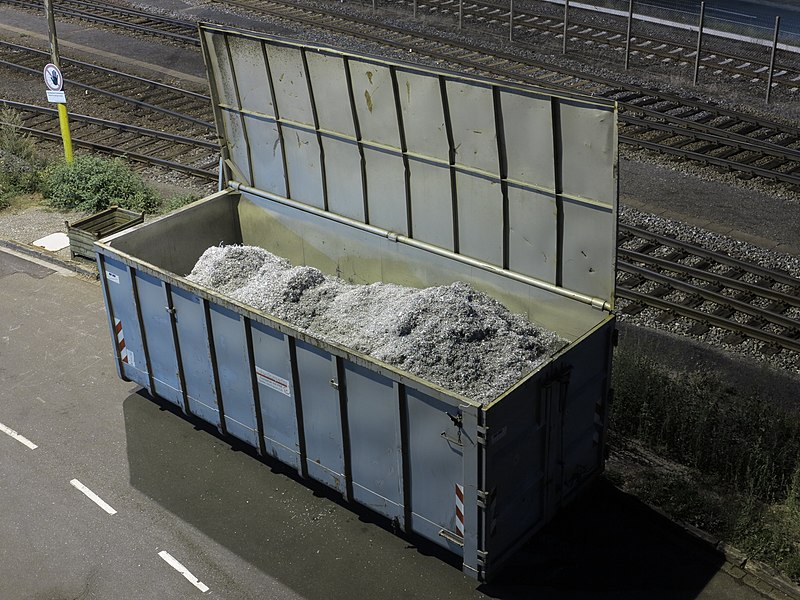Swarf

|
| This container is filled with aluminium swarf collected at the VW-factory Brunswick, Germany. |
Contents |
[edit] Introduction
Swarf is the term used to describe small chips, shavings, filings or other particles of materials created through different types of machining processes. It can be made from wood, metal, plastic or other construction substances and can be created in the form of chips, tendrils, dust, mist, fragments and so on.
[edit] Dangers of swarf
Metal swarf can cause health and safety issues for several reasons.
- Swarf particles can sometimes be sharp and projected with significant force. Flying swarf can cause injuries, particularly if it is sharp, and it can damage equipment. There are different types of personal protective equipment (PPE) recommended for those who may be exposed to swarf, including protective goggles, sleeves, aprons, gloves and safety shoes.
- Depending on the type of material, swarf can also be a fire hazard. Under certain circumstances (particularly if it is coated with cutting oil), swarf can be highly flammable. Swarf stored in containers or piles may even spontaneously combust. In these instances, fire extinguishers suitable for the material being cut should be to hand. For example, Class A water extinguishers should be available if wood swarf is created, and Class D powder extinguishers should be nearby if metal swarf is present.
[edit] Swarf recycling
Since some types of swarf require a great period of time to break down, they can be harmful to the environment; not only damaging to agriculture, but also dangerous to wildlife. It is possible to recycle some types of swarf, including metal. It may be safer and easier to transport swarf for recycling if it is first compressed into cubes. There is specialised machinery that can convert swarf from waste material into products such as bricks.
[edit] Related articles on Designing Buildings Wiki
Featured articles and news
A change to adoptive architecture
Effects of global weather warming on architectural detailing, material choice and human interaction.
How big is the problem and what can we do to mitigate the effects?
Overheating guidance and tools for building designers
A number of cool guides to help with the heat.
The UK's Modern Industrial Strategy: A 10 year plan
Previous consultation criticism, current key elements and general support with some persisting reservations.
Building Safety Regulator reforms
New roles, new staff and a new fast track service pave the way for a single construction regulator.
Architectural Technologist CPDs and Communications
CIAT CPD… and how you can do it!
Cooling centres and cool spaces
Managing extreme heat in cities by directing the public to places for heat stress relief and water sources.
Winter gardens: A brief history and warm variations
Extending the season with glass in different forms and terms.
Restoring Great Yarmouth's Winter Gardens
Transforming one of the least sustainable constructions imaginable.
Construction Skills Mission Board launch sector drive
Newly formed government and industry collaboration set strategy for recruiting an additional 100,000 construction workers a year.
New Architects Code comes into effect in September 2025
ARB Architects Code of Conduct and Practice available with ongoing consultation regarding guidance.
Welsh Skills Body (Medr) launches ambitious plan
The new skills body brings together funding and regulation of tertiary education and research for the devolved nation.
Paul Gandy FCIOB announced as next CIOB President
Former Tilbury Douglas CEO takes helm.
UK Infrastructure: A 10 Year Strategy. In brief with reactions
With the National Infrastructure and Service Transformation Authority (NISTA).
Ebenezer Howard: inventor of the garden city. Book review.
Airtightness Topic Guide BSRIA TG 27/2025
Explaining the basics of airtightness, what it is, why it's important, when it's required and how it's carried out.





















